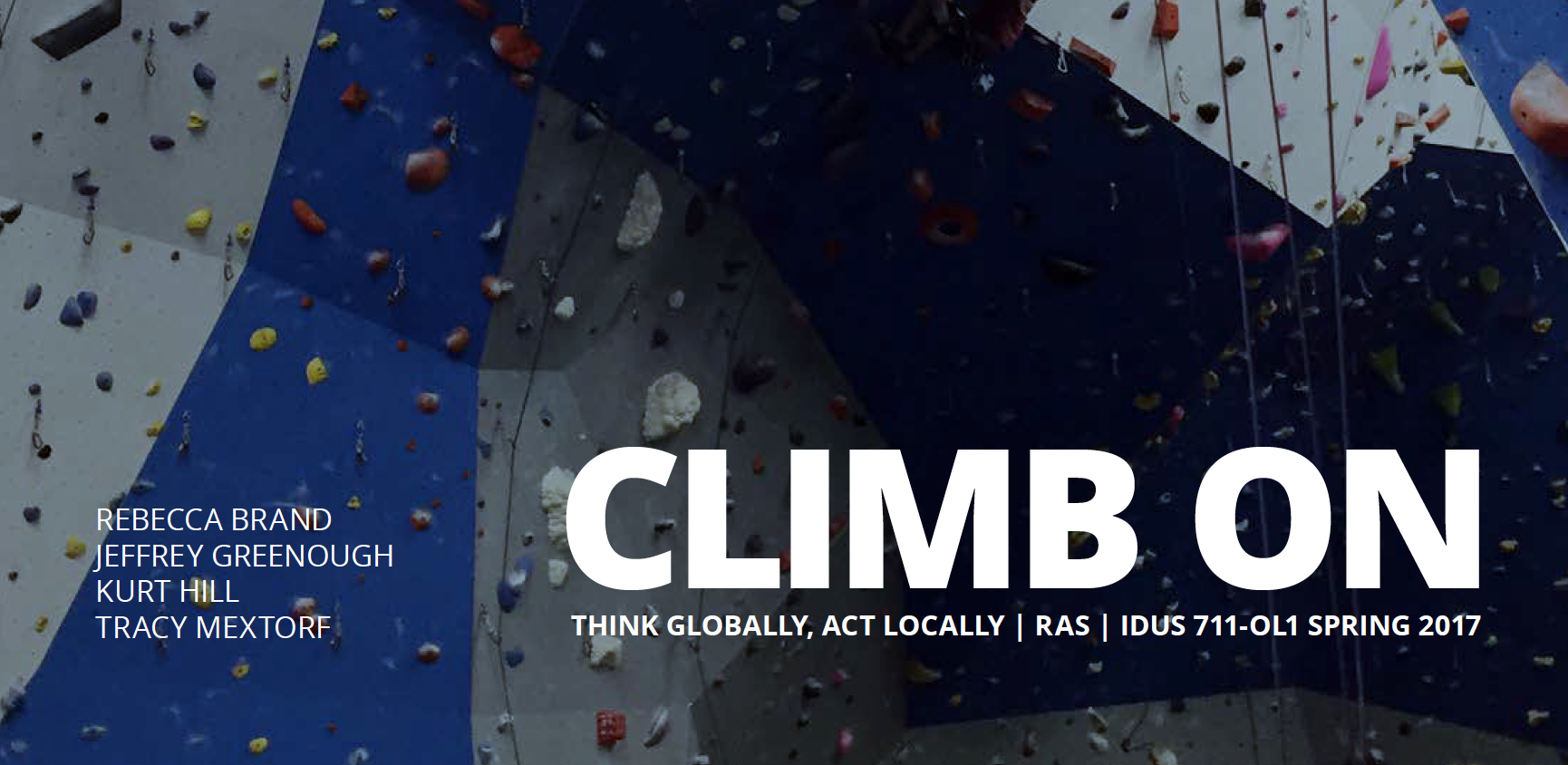
Project Goal
Research indoor climbing and develop clear, actionable opportunities for expanding access.
Our intent was to identify factors which limit accessibility to indoor rock climbing. We gathered research from multiple angles including: fees associated with the climbing, potential problems with current tools/gear on the market, demographics of the climbing community, and access to the climbing network through education, social media, or motivators.
SCAD Team Members: Rebecca Brand, Jeffrey Greenough, Kurt Hill, Tracy Mextorf
Brief excerpts from the process book
The design management process spans ethnographic research, insight analysis, and opportunity mapping.
Click through to see examples of some of the steps.
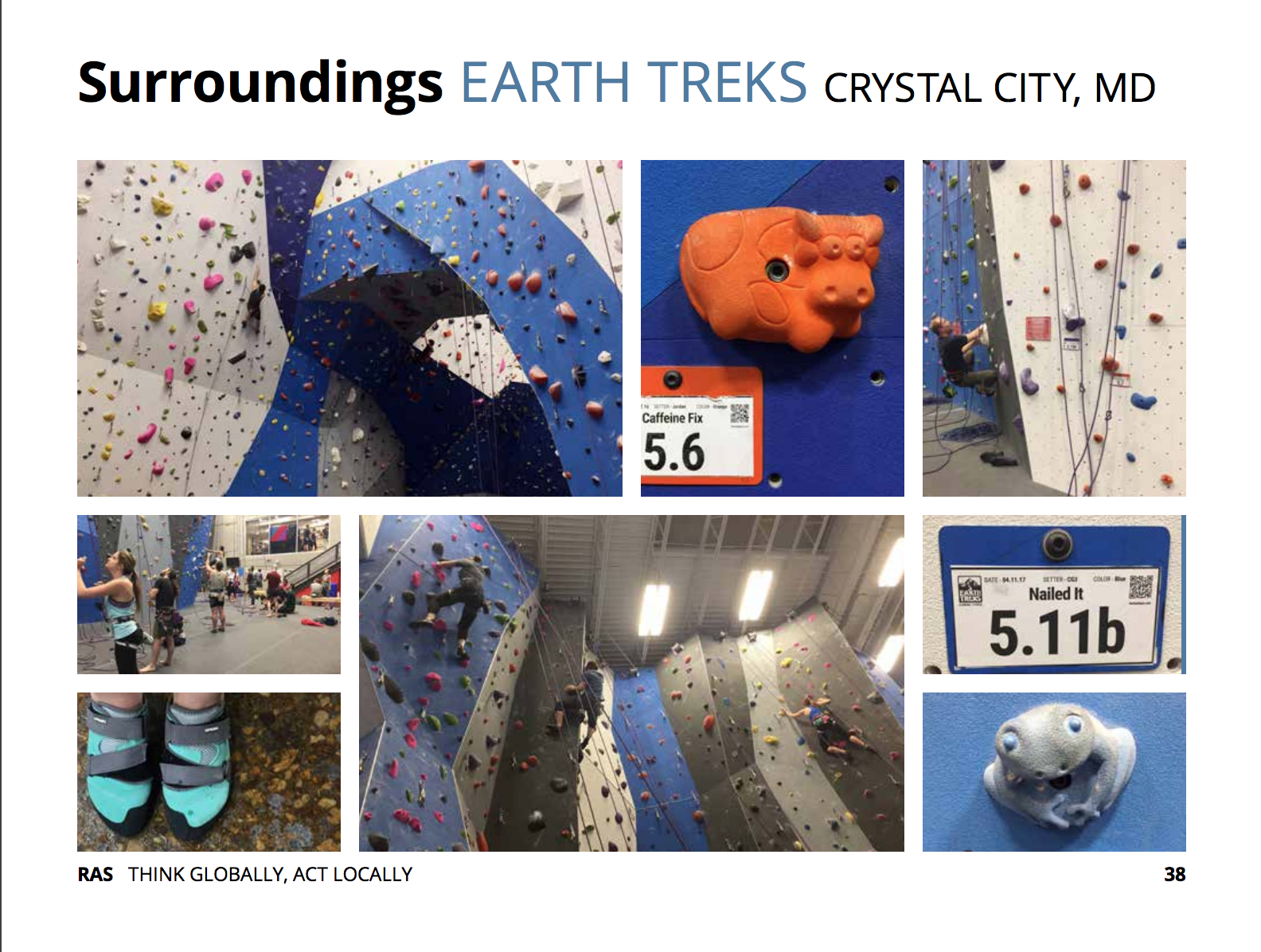
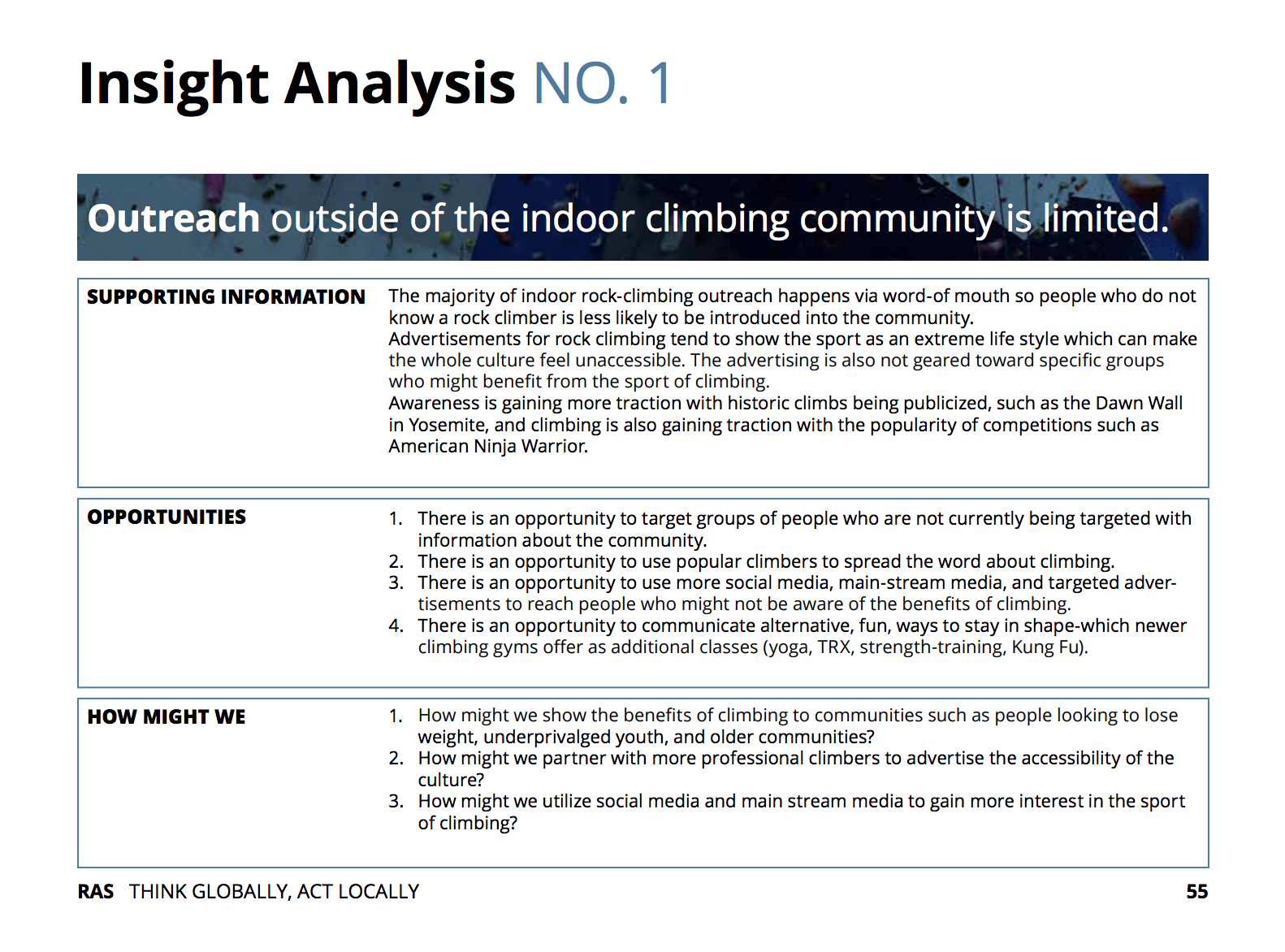
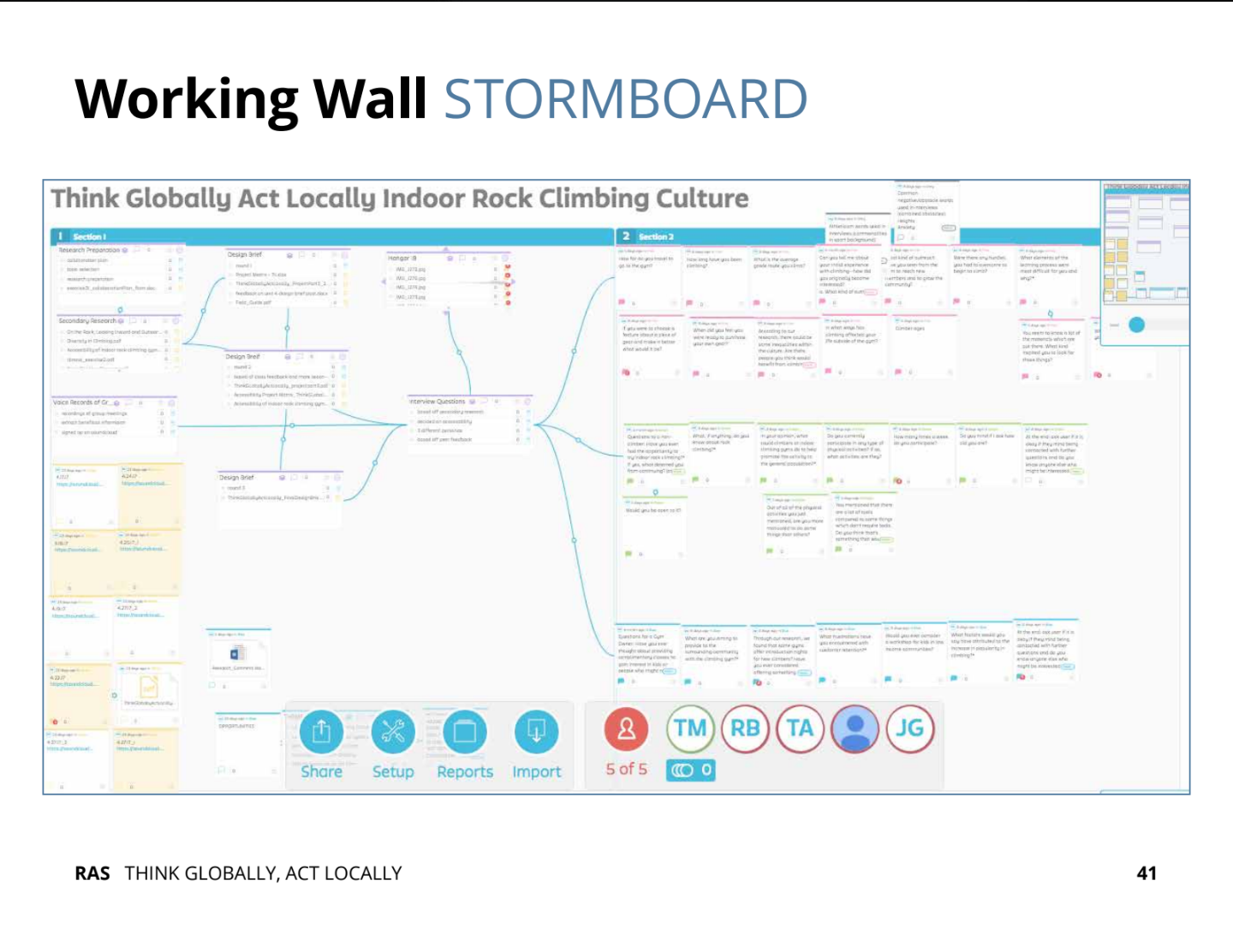
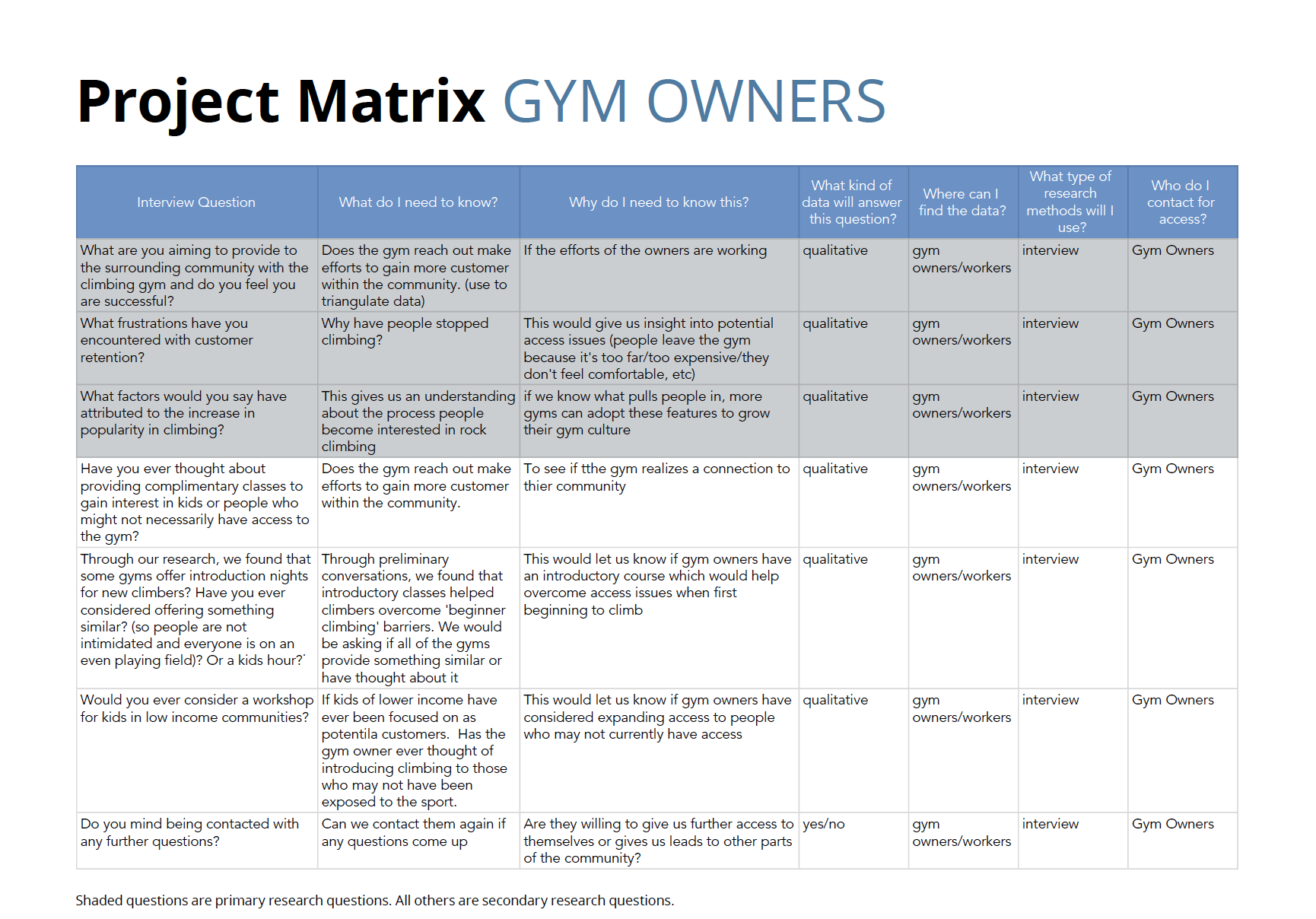
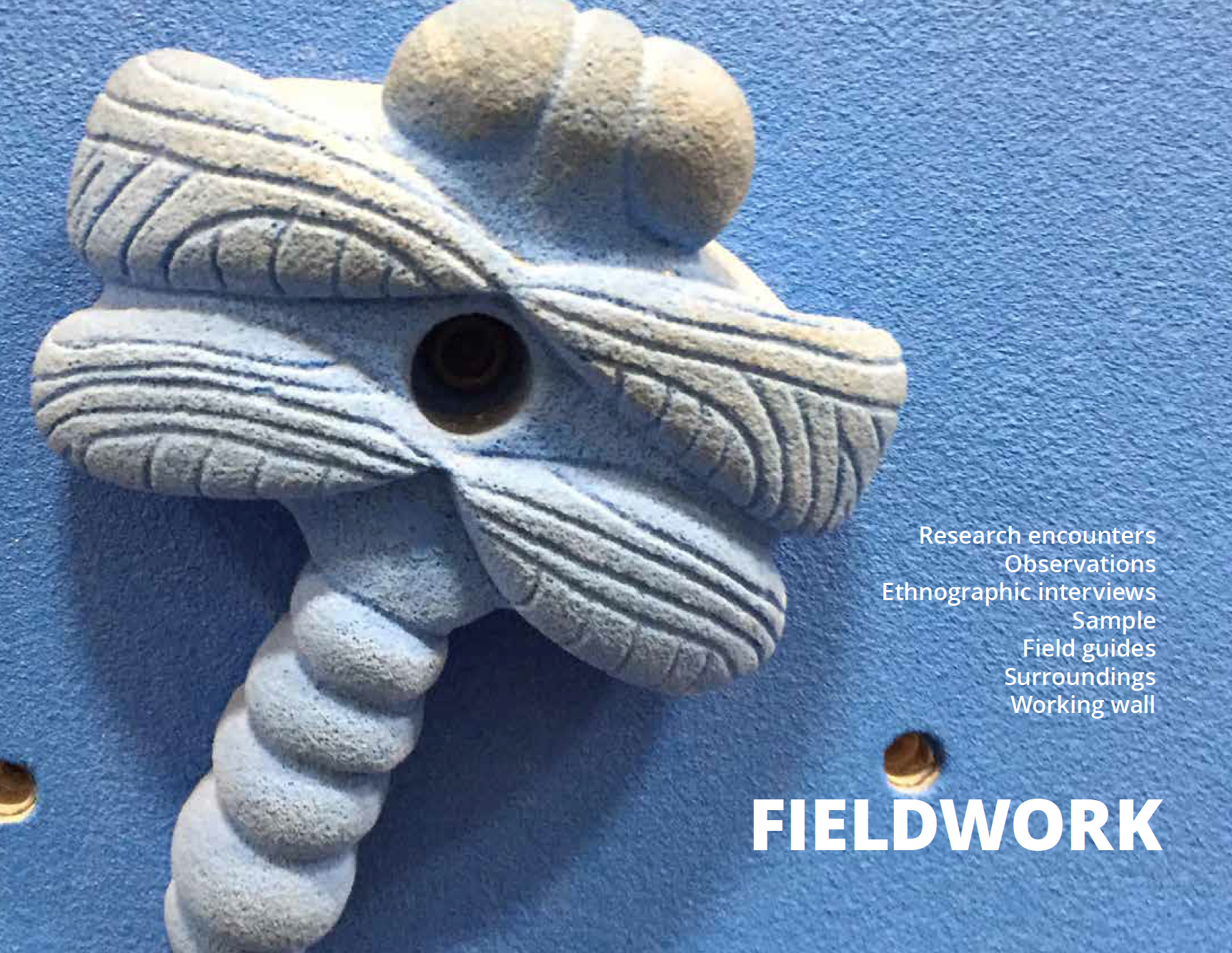
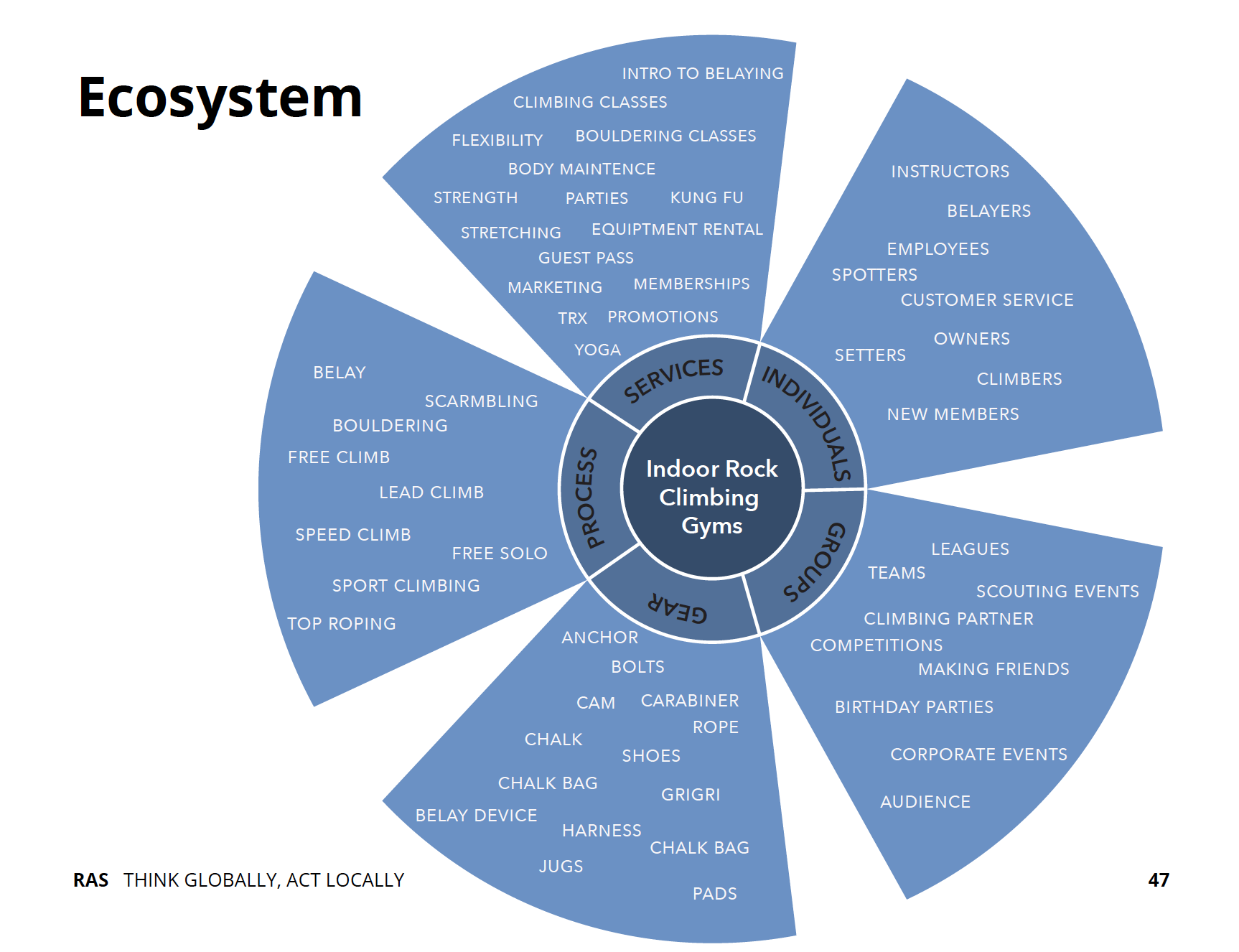

Final Concept
The opportunities found to be most actionable in the four researched climbing gyms were related to climbing gear, intimidation factors, outreach, and affordability.
Recommendations overview:
Gear: custom shoes to ensure proper fit for the comparable climbing level, harnesses color-coded to help guide the tying-in process, expand in-store gear options
Intimidation factors: mentorship program, a Belay Buddy mobile app, inexperienced climber-targeted advertisements
Outreach: advertising campaigns targeting benefits for various age ranges and body types, leverage athletes on popular climbing to reinforce the climbing benefits, shuttle services or cost-effective transport
Cost: used gear more accessible on websites, try-before you buy program


